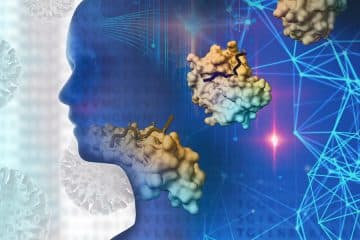What is chronic pancreatitis?
Chronic pancreatitis is a persistent inflammation of the pancreas caused by several episodes of acute pancreatitis leading to irreversible tissue changes like atrophy, calcifications, fibrosis, ductal strictures which deteriorates function of pancreas.
Prevalence and risk factors
Prevalence of chronic pancreatitis in the USA is 30 -100 per 100,000 population with peak in persons aged 45-55 years, it’s also more common among men than women.
Most common cause for chronic destruction of pancreas is chronic heavy alcohol use, responsible for about 60-70% of cases. The risk of chronic pancreatitis increases with the duration and amount of alcohol consumed. Although only about 10% of heavy alcohol users develop chronic pancreatitis.
Pancreatic ductal obstruction due to strictures caused by trauma, gallstones, tumor mass effect, anastomosis, iatrogenic strictures, etc constitutes nearly 10% of cases.
Idiopathic pancreatitis – meaning the cause for inflammation is not identified, about 20-30% of cases.
Tobacco – use is a dose-dependent risk factor known to significantly affect prevalence of chronic pancreatitis.
Systemic diseases –
- Cystic fibrosis – about 2 % of patients develop chronic pancreatitis, CF mutations cause defects in pancreatic secretions.
- Severe hypertriglyceridemia – Pancreatic enzyme, lipase is needed to break down triglycerides, overload can eventually damage pancreatic tissue.
- Hyperparathyroidism – causes peak in calcium which itself is trigger for pancreatic enzyme secretion and premature activation, activated enzymes start auto digesting pancreatic tissue and cause inflammation.
Autoimmune pancreatitis can be the cause of inflammation, when our own immune system attacks pancreatic cells. There are 2 types of autoimmune pancreatitis IgG4-related and one associated with Inflammatory Bowel Disease, mostly biopsy is needed to differentiate between those two.
Tropical Pancreatitis – idiopathic form of pancreatitis that develops in children and young adults who live in tropical areas like India, Nigeria, Indonesia. The cause is unknown but the probable etiology is mutation in SPINK1 gene and high consumption of cassava. Tropical pancreatitis is associated with an accelerated course of disease and increased risk for pancreatic cancer.
Clinical findings
Typical clinical findings associated with chronic pancreatitis are continuous or episodic intense pain in the epigastrium or left upper quadrant which radiates to the back, is relieved on bending forward and is exacerbated after eating. Attacks can last from several hours to as long as 2 weeks. Besides the pain symptoms like anorexia, nausea, vomiting, constipation, flatulence are common findings.
During the attacks there is a characteristic tenderness over pancreas, muscle guarding and ileus.
Pancreas has an endocrine and exocrine role. The exocrine function of pancreas is responsible for fat digestion with enzyme – lipase. Later in course of disease when enzyme production is reduced malabsorption with weight loss and steatorrhea – bulky, greasy, fatty stool may appear.
In addition patients become deficient in fat-soluble vitamins like A, D, E, K and require replacement.
Endocrine function of pancreas can deteriorate after some time too. Recurrent attacks of inflammation damage the alpha and beta cells of pancreas which significantly increases risk of pancreatic diabetes mellitus, which is quite difficult to manage since patients often have hypoglycemic episodes.
Diagnosis
Physicians start off with detailed medical history taking, assessing your clinical features and risk factors.
Laboratory findings help to identify underlying cause of inflammation
CBC – Complete blood count – to look for signs of inflammation
LFT – Liver function tests – assess the function of liver
Pancreatic enzymes – elevated pancreatic enzymes like – amylase and lipase can be suggestive of diagnosis however, in contrast to acute pancreatitis, diagnosis can’t be excluded if the level of pancreatic enzymes are normal, since pancreatic tissues are often atrophic or fibrosed after several bouts of inflammation, thus there is not enough healthy tissue to even produce those enzymes.
Calcium levels – hypercalcemia as we already mentioned can be the cause of chronic pancreatitis, if the level of calcium is high we look for parathyroid gland abnormalities.
Triglycerides – to exclude hypertriglyceridemia as the etiology of chronic pancreatic inflammation
Pancreatic function tests – there are 2 types of tests that can be done,
Direct – monitor secretion of pancreatic exocrine products, done for early stages of chronic pancreatitis, using infusion of hormone – cholecystokinin and measurement of production of pancreatic enzymes, although this test is rarely used in clinical practices nowadays.
Indirect – measures secondary effects of lack of pancreatic enzymes, is more widely-available, less time-consuming, invasive and expensive than direct tests. It involves blood or stool samples to look for serum trypsinogen, which if very low is highly specific for chronic pancreatitis and 72-hour test for fecal fat in patients who are following a high-fat diet, which is diagnostic for steatorrhea.
Imagining:
Plain or contrast-enhanced CT – is considered to be the best initial test since it’s easily available in all clinics and can reveal structural changes in pancreatic tissue.
MRCP (Magnetic resonance cholangiopancreatography) – CTs are nowadays replaced by MRCPs for several reasons, 1) MRCP are more sensitive for changes of early stages of pancreatitis 2) Does not expose patient to radiation
ERCP (Endoscopic retrograde cholangiopancreatography) – besides detecting early tissue damages, it also can be therapeutic for pancreatitis, with duct dilatation and stent insertion. Although being the most sensitive, specific and effective modality of choice it’s not used routinely since it exposes patients to radiation and has high cost.
Plain Abdominal X-ray – can visualize pancreatic calcifications, but only seen in 30% of cases.
Imagining test of choice depends on costs, availability, invasiveness and adverse effects. Typical findings for chronic pancreatitis are calcifications, ductal dilatation, heterogeneity of gland.
Other tests:
Genetic tests – may be indicated for younger patients with chronic idiopathic pancreatitis or family history of chronic pancreatitis to find the cause. In about 30% cases of idiopathic pancreatitis CFTR Cystic fibrosis genes were found on genetic testing.
Pancreatic function tests – to assess severity of the diseases fecal elastase-1 activity (FE-1) test is used which confirms steatorrhea is because of pancreatic lipase insufficiency.
CA 19-9 – Serum tumor marker to exclude pancreatic cancer.
Treatment
Diet:
Low-fat Small, regular meals should be prescribed, since body depends of pancreatic enzymes to absorb the fat, consuming fatty foods while having diseases pancreas is just putting on extra strain on organ
Absolutely restrict alcohol and tobacco – which is a causative agent, can precipitate attacks.
Pancreatic enzyme replacement :
To replace the hormones pancreas can’t produce itself, like amylase, lipase, protease drugs called CREONs are used. Tablets should be taken at the start, during or at the end of meals. Simultaneous administration of H2 blockers or proton pump inhibitors is needed so the pill is not destroyed by stomach acids.
Fat-soluble vitamins like Vitamin A, D, E, K should be supplementation for patients with chronic pancreatitis is necessary since they are commonly lost in stools resulting in deficiency,
For patients with autoimmune pancreatitis treatment of choice are – glucocorticosteroids like prednisone for 2 months, followed by a taper of dosages.
Pain can be managed with different groups of medications, it’s better to start with mild pain-killers like Paracetamol, NSAIDs, and tramadol. For severe pain – opioids like long-acting fentanyl or morphine are prescribed. Pain modifying medications can be prescribed like tricyclic antidepressants.
If the pain is intractable there are several invasive procedures that can relieve pain:
Celiac ganglion block – Percutaneous or endoscopic US-guided nerve blockade, may provide short-term relief in some patients
Endoscopic papillotomy with ductal dilatation of biliary tract and stent placement, which ensures free flow of bile.
Thoracoscopic bilateral splanchnicectomy – this procedure destroys the afferent sensory nerves of pancreas, thus impedes the feeling of pain.
Pancreatic sphincterotomy or fragmentation of stones in the pancreatic duct by lithotripsy(shock waves) and endoscopic removal of stones from the duct can relieve the pain.
Endoscopic therapy is effective in about 50% of cases and in other 50% surgery is successful.
Surgery
Surgery is indicated when there is suspected pancreatic cancer or in those with intractable pain. The choice of surgery type argely depends on anatomy of pancreas, condition of pancreatic duct, surgical history of patient and so on.
Pancreaticojejunostomy – if main pancreatic duct is dilated
Resection of affected part of pancreas
In advanced cases, subtotal or total pancreatectomy with islet autotransplantation may be considered as a last resort, although it has variable efficacy and increases risk of diabetes mellitus and chronic pancreatic insufficiency.
Complications
Pancreatic Pseudocyst – encapsulated collection of pancreatic fluid, is by far the most common complication, which should be managed with US/CT guided endoscopic or laparoscopic drainage before it complicates with infection, rupture or hemorrhage.
Pancreaticopleural fistula – can also be treated endoscopically by placing a stent across a disrupted duct.
Pancreatic cancer – can be a rare but serious complication of chronic pancreatitis more commonly found in those with hereditary pancreatitis, to diagnose it special tumor marker test CA 19-9 is commonly used, but biopsy is the only confirmatory test.
Splenic vein thrombosis – splenic vein which lies adjacent to pancreas commonly becomes inflamed, which can lead to thrombus formation, left-sided portal hypertension and eventually gastric varices.
References:
https://www.ncbi.nlm.nih.gov/books/NBK537191/
CURRENT – Medical Diagnosis and Treatment, 2021
Maxine A. Papadakis, Stephen J. McPhee, Michael W. Rabow
https://www.msdmanuals.com/professional/gastrointestinal-disorders/pancreatitis/chronic-pancreatitis
https://www.amboss.com/us/knowledge/Chronic_pancreatitis/
https://www.health.harvard.edu/a_to_z/chronic-pancreatitis-a-to-z
https://www.ncbi.nlm.nih.gov/pmc/articles/PMC6940526/
https://www.webmd.com/digestive-disorders/digestive-diseases-pancreatitis
https://www.ncbi.nlm.nih.gov/books/NBK482325/
See Also


